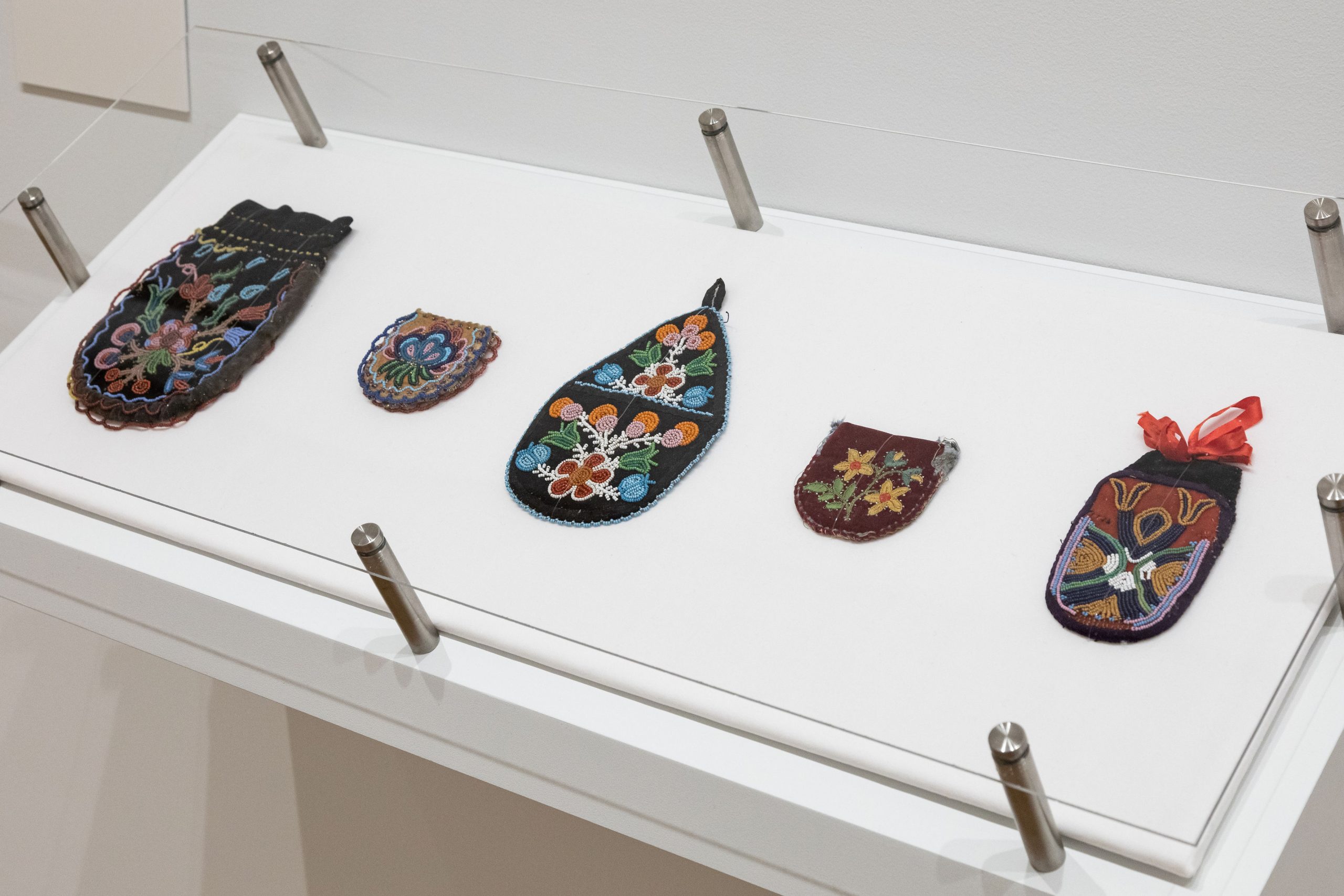Sherry Farrell Racette – The Little Traveller
In June 2022, Holly Aubichon, Sherry Farrell Racette and Tarah Hogue visited the Indigenous collections at the Royal Saskatchewan Museum. Together, they selected a number of Grandmother pieces for the exhibition Storied Objects: Métis Art in Relation, including five small bags, each with their own story to tell. Here, Farrell Racette writes about one of these Grandmothers: a small bag from the 1870s.
This unusual small bag, with its stylized motifs, is a moccasin vamp transformed into a bag. Donated to the Royal Saskatchewan Museum in 1955 by Alexina Laderoute Marion (1875-1968), she estimated it was at least 85 years old. More than one artist may have worked on it: the woman who did the beadwork and sewed the moccasin, and another who turned a vamp into a pouch, adding the bright red ribbon. Tucked inside was a folded note: “beadwork is a very exacting task in an easy comfortable position. Imagine doing it while on route following the caravan in a Red River cart.”

Laderoute was born in St. Boniface but her mother, Marguerite St. Arnaud, was born on the Mackenzie River, moving to Red River where she married Jean Baptiste Laderoute. Married to a buffalo hunter and freighter, Marguerite made many journeys by Red River cart. The Laderoutes were involved in key actions of the 1869-70 Manitoba Resistance and Jean Baptiste was one of the first to occupy Fort Garry. The Laderoutes stayed in post-resistance Manitoba until 1885 when they moved across the line to North Dakota.
The artist who created this bag could also have been Alexina’s mother-in-law, Eliza McDougall Marion. Born at Lesser Slave Lake, Eliza settled in St. Norbert with her husband Edouard Marion. The iconic moment when Louis Riel stepped on the surveyor’s chain in 1869 happened on their land. Edouard Marion and André Nault raised the alarm. The Marion family also left Manitoba, finding sanctuary in North Dakota, starting over in 1878.
Linked by a web of relations and shared experiences, the Laderoutes and Marions reconnected in North Dakota. Alexina married John Marion in 1903. They moved back to Canada in 1910 and farmed near Estevan, Saskatchewan. Edward and Eliza, now in their 80s, joined them. But by 1921, the farm was gone, and John was a 56-year-old labourer renting a small house in Estevan. The Marions moved north to Naicam where John passed away in 1932, and Alexina in 1968. Through conflict, movement and change the little bag stayed with the family. It is a tiny witness to a history shared by many families.
